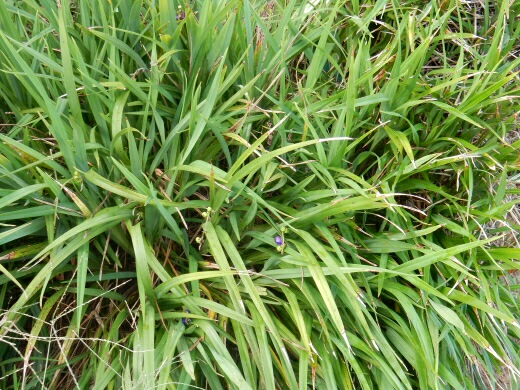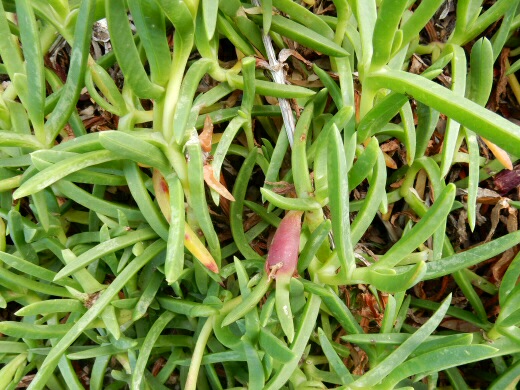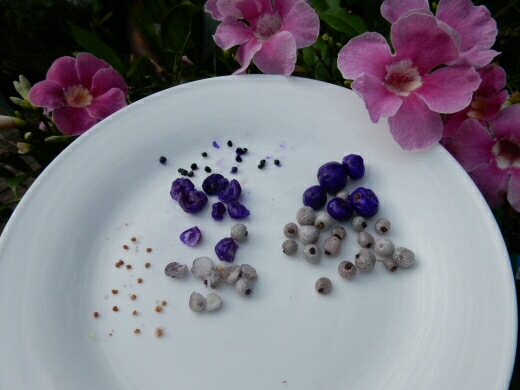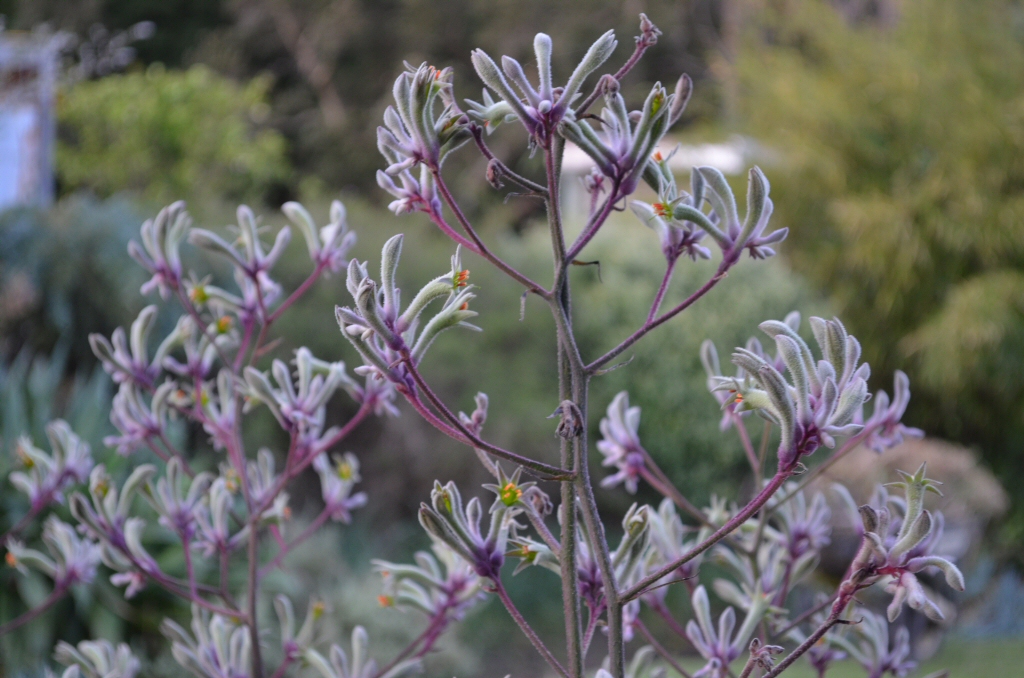BUSH FOOD FORAGING WITH BONUS SEEDS
I have just got back home from a great three week tour of Kangaroo island, the Great Ocean Road and Tasmania. It was very successful- we have an amazing country with fantastic plants, but it’s nice to get onto home ground again.
Taking time to relax, I took a wander down to the beach, and autumn has delivered some irresistible bush food. The local Dianella caerulea is producing bright blue berries, and after a cautious nibble, I found them sweet and delicious with nutty undertones. With such bright colouring, I wonder if we have found a new home grown super food? This is a useful perennial plant for easy care gardens, and edible berries that are yummy are a real bonus. It is mat forming, so is good for stabilising soils. I hear that the roots can be roasted too, but I prefer not to dig up plants to try it.
Carpobrotus are natural seaside groundcovers. The ripe pods can be an aquired taste for some, with their salty cooked fig tang. Pinch off a nice red pod, and suck the pulp from the broken end to see if you are a fan of the taste
As I arrived home, I was delighted to find that my Austromyrtus berries had ripened while I was away travelling, so I added them to my foraged plate. If you are careful when you eat these lovely berries, you can save the seeds. If you eat on the run, you can spit the seeds into the bush to grow into new plants. Or you can carefully cut the berries open to save the seeds to plant into pots. The shiny black seeds are from the Dianella, brown seeds are Austromyrtus dulcis seeds in the picture below-
Once your seeds have grown into nice sized plants, create your own future bush food garden. A great way to find the best place to plant your seedlings is to join your local Bush Care group, or the Australian Native Plant Society group in your area.
MY NEW ‘TALL AND TOUGH’ KANGAROO PAWS
I love my kangaroo paws. I love their furry flowers that resemble a curled marsupial paw.
I began breeding this wonderful Western Australian native when I was at university, and continue to do so still. The challenge back then was to create plants that look good in the nursery all year round, as well as to increase resistance to ink spot disease. We did this by crossing with the hardy Anigozanthos flavidus, which naturally grows in swampy areas in Western Australia, with smaller species, creating some brilliant pot specimens. These was a revolution in native plants for gardens. Sadly, some of these container stars didn’t always perform as well in the garden. This led to the impetus to breed some great garden and landscape plants.
I have been breeding and selecting new colours of Anigozanthos flavidus to create a new range of Tall and Tough kangaroo paws, which will be able to tolerate a wider range of conditions. They can grow in a wide range of soil types, and can handle damper soils as well as some shade. Higher light levels will give improved flowering. I have released Landscape Yellow and Landscape Orange already, and am now adding Landscape Lilac and Landscape Lime to the range. They are fast and vigorous growing plants.
Landscape Lilac is a bushy growing plant with gorgeous pale purple flowers in spring. They are multibranched and attractive to birds, and make great cut flowers.
Landscape Lime has glowing pale green flowers in spring on boofier foliage that forms a good sized clump. The blooms are multibranched, bird attracting and good cut flowers.
-
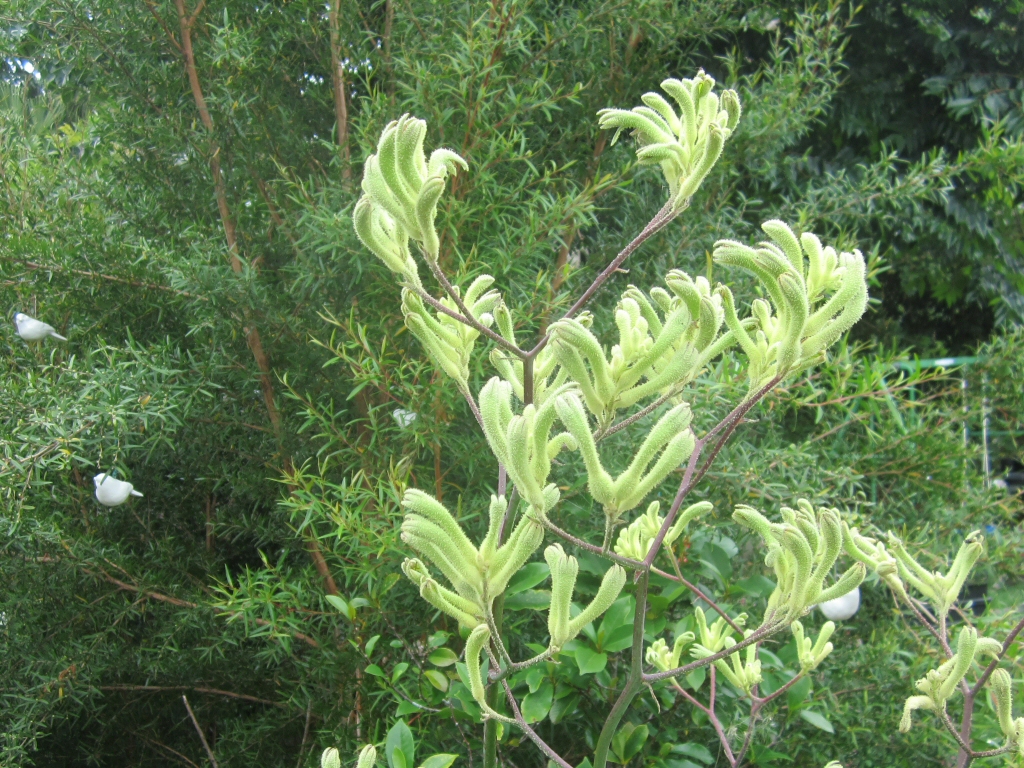
Anigozanthos flavidus 'Landscape Lime'
-
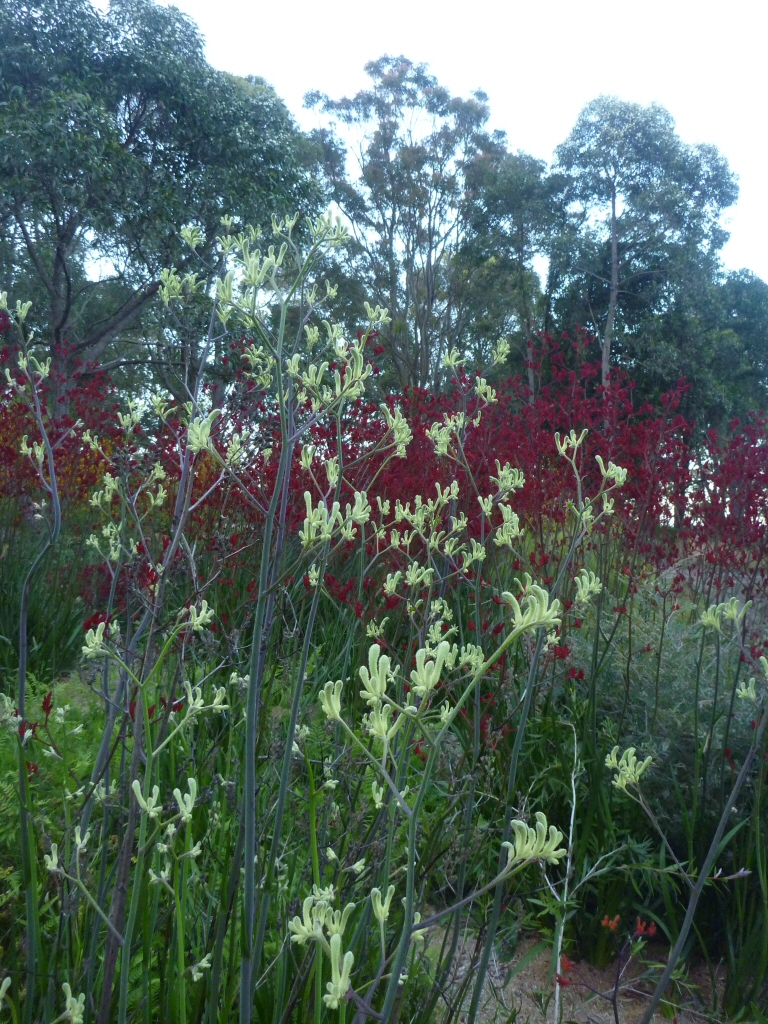
Anigozanthos flavidus 'Landscape Lime'
-
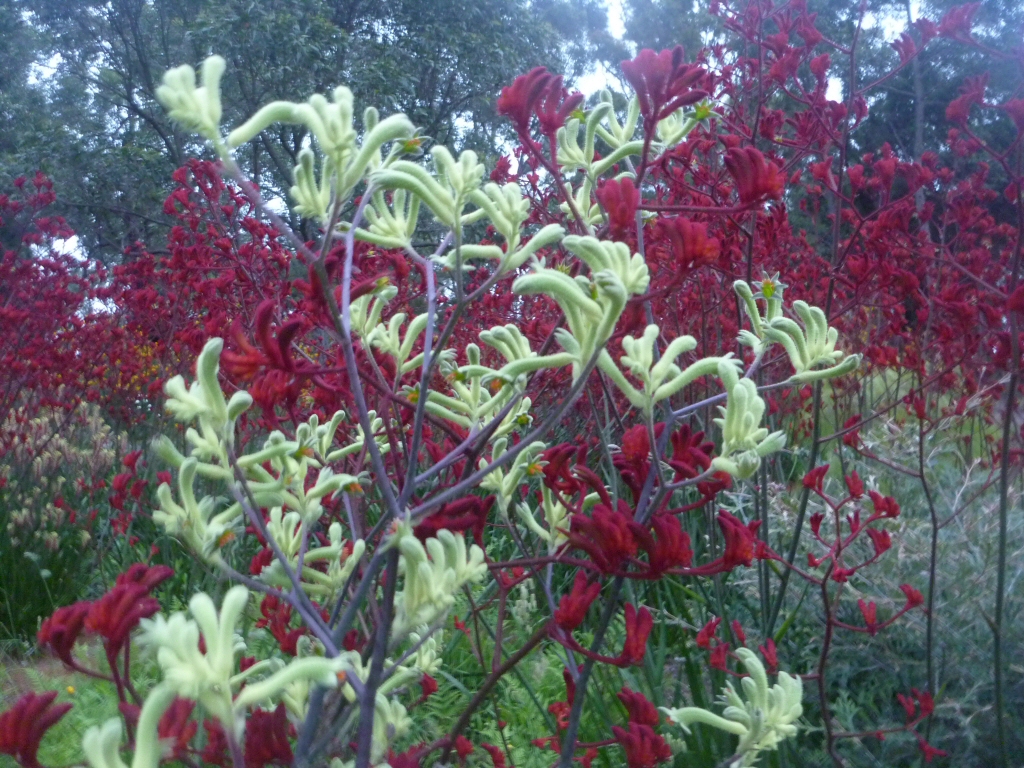
Anigozanthos flavidus 'Landscape Lime'
All of the Tall and Tough range are easy care plants. Those who got the early newsletters will remember my extreme gardening article, where I took the whipper snipper to an old plant. So, if the foliage on your paws look tired, if extreme weather conditions cause damage, or if there are dying flowers, simply cut them back low to the ground. The underground rhizomes will send up fresh green shoots. A good dose of seaweed based fertiliser at the same time will help the plant.
For more information on cultivating these great plants, go to my articles on growing kangaroo paws and renew your kangaroo paw

